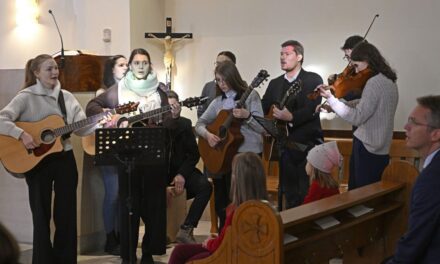"A nation that does not know its past does not understand its present, and cannot create its future!"
Europe needs Hungary... which has never let itself be defeated.
Throne conflict at the beginning of the 14th century
In the seven years between 1301-1308, fierce political and military battles raged for the acquisition of the Hungarian throne. Anjous , the Bavarian Wittelsbachs , and the Czech Premysls fought for the land of the Carpathian Basin and the possession of the Holy Crown between Caroberto , Otto and Wenceslas for the Hungarian throne, luckily for the Hungarians, the Duke of Anjou from Naples emerged victorious, who is Róbert Károly in Hungarian historiography. (I will refrain from describing the detailed events here, because I have discussed them previously in parts 21-22-23, etc. of the Five Minute History... series.)
After the extinction of the Árpád House, the European powers tried again to acquire the Carpathian Basin and to expel the Hungarians from this land blessed with all natural treasures. It is true that this had already been started four centuries earlier, but it did not succeed while the Árpáds were alive. with Róbert Károly Anjou because, as I have been mentioning in my textbooks and other writings for years, he played the historical role of the "foreign Hungarian". The predecessors of the Bavarian and Czech claimants to the throne have already proven that our ancestors living in the 14th century could not expect much good from them.
The Kingdom of Hungary regained its glorious past in the 14th century
Róbert Károly (1308-1342) and his son Lajos Nagy (1342-1382) raised the Kingdom of Hungary to such a high level in political, economic, cultural and military terms that we can still be proud of centuries later, and we can only look to Hungary as a good example.
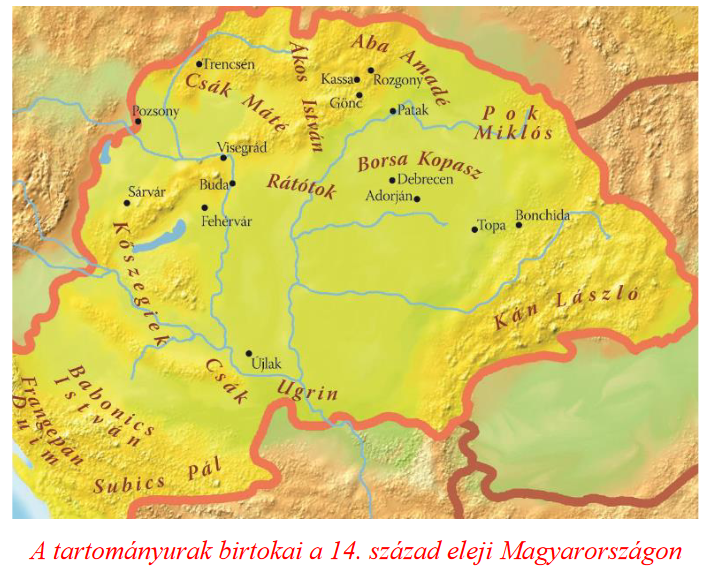 Róbert Károly had to face many problems. One of these was the overthrow of the petty kings, which was achieved only at the cost of internal power struggles lasting a decade and a half. A country on the verge of disintegration was kept together by centralizing power. The strong-willed and talented king was able to create a solid, cohesive state. The royal coat of arms expresses where the ruler came from, when the image of the shield included the Anjou lilies in addition to the Árpád stripes.
Róbert Károly had to face many problems. One of these was the overthrow of the petty kings, which was achieved only at the cost of internal power struggles lasting a decade and a half. A country on the verge of disintegration was kept together by centralizing power. The strong-willed and talented king was able to create a solid, cohesive state. The royal coat of arms expresses where the ruler came from, when the image of the shield included the Anjou lilies in addition to the Árpád stripes.
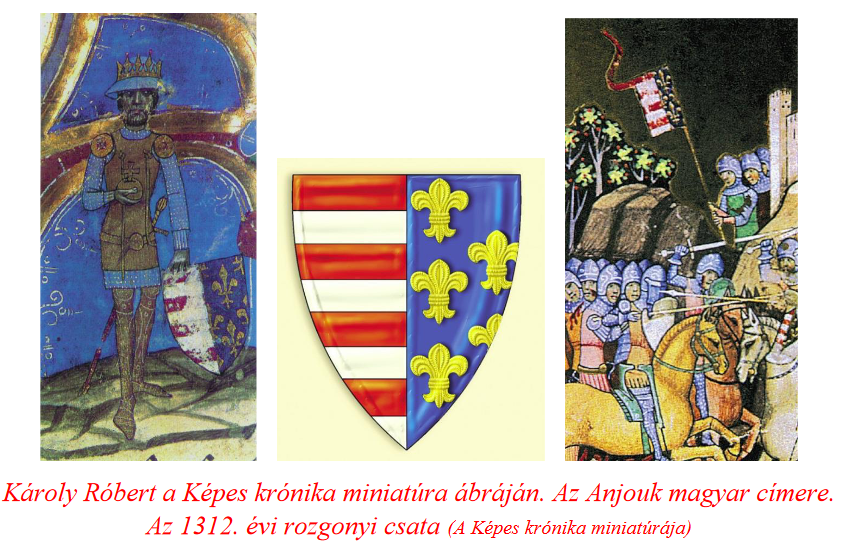
A major weapon of Róbert Károly's reign was the significant boost in economic life and the filling of the royal treasury. This was achieved through the exploitation of gold mines in the Highlands and Transylvania, the introduction of the thirty-odd tax and the gate tax, and, if necessary, the imposition of extraordinary taxes and the leasing of royal lands. Róbert Károly also made a lasting impact in the field of foreign policy when he convened the royal meeting in Visegrád in 1335. The Kingdom of Hungary established its European-level military greatness and strength by setting up a partially newly organized banderial army.
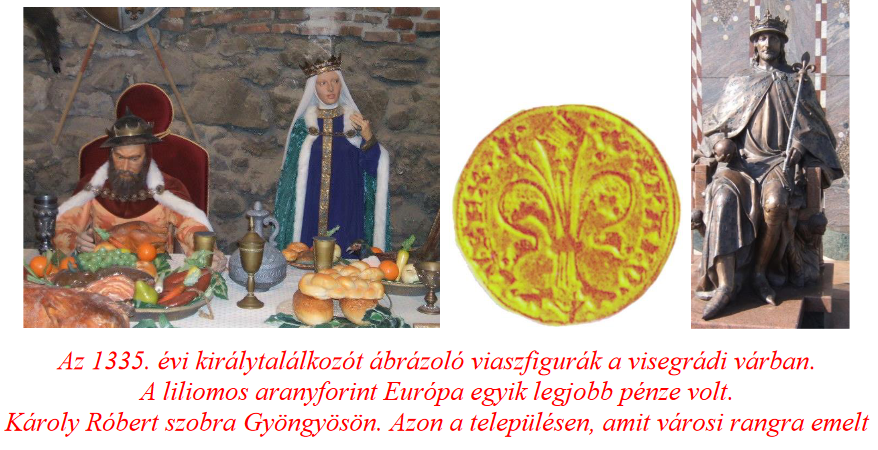
Unfortunately, there are many counterexamples to the fact that when foreign ruling families came to the Hungarian throne, they destroyed the country, either knowingly or because of their incompetence. Róbert Károly, or officially Károly I , is one of the figures of Hungarian history whose statue deserves a place in the field of Heroes. He was a foreigner, as his father was Károly Martell of Anjou and his mother was Klemencia Habsburg. We note that his great-grandfather was István V, King of Árpád House.
The King of Anjou was linked by strong kinship and political ties to the southern and western Europe and through his fourth wife (Elizabeth of the Polish Lokiet) to the northern powers. Despite all this, he was Hungarian because he made the Kingdom of Hungary great and prosperous.
Louis the Great (1342-1382), the Knight King
Louis of Anjou, who came to the throne at the age of sixteen, inherited a strong, unified country from his father. The treasury was full, the country was protected by a strong, well-equipped and trained army. The counties were governed by barons loyal to the king. However, the weapons were often in use during the Knight King's four-decade reign.
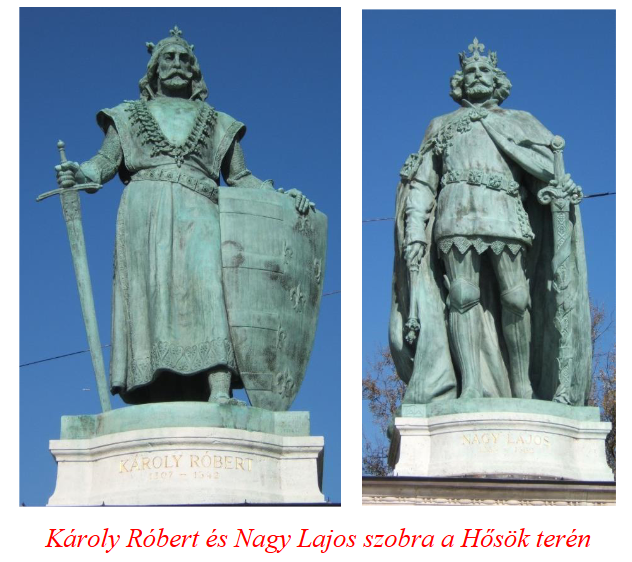
The significance of the Polish-speaking king and Italian "father-speaking" king in Hungarian history can best be understood by knowing that King Louis was the only one from the long line of our rulers to have earned the epithet "Great". However, it should be noted that his paternal great-grandmother Mária Árpád-házi , the daughter of the Hungarian king István V. Árpád blood also flowed on his mother's side, as his great-grandmother named Jolán IV. Béla of Hungary.
The knight king lived in the age, in the 14th century, when culture, entertainment (knight tournaments), the conquest of ladies, Christianity, and the knightly way of life were expressed in Western countries. The court of King Louis and many castles of Hungary were also part of the knightly way of life. However, the Hungarian king also had a unique heritage in Europe that no one else had. And this is Saint László . Today, nearly eighty medieval churches are known, the walls of which are decorated with frescoes of St. László. Almost without exception, these frescoes were commissioned by the Anjou, primarily King Louis. If it were not for Lajos Nagy's enormous respect for King László, who lived three centuries earlier, our knowledge of Saint László today would be much poorer. At the same time, it should also be known that László, who lived in the 11th century, was the first "knight king" in Europe, who was well ahead of the West and the age of Louis the Great.
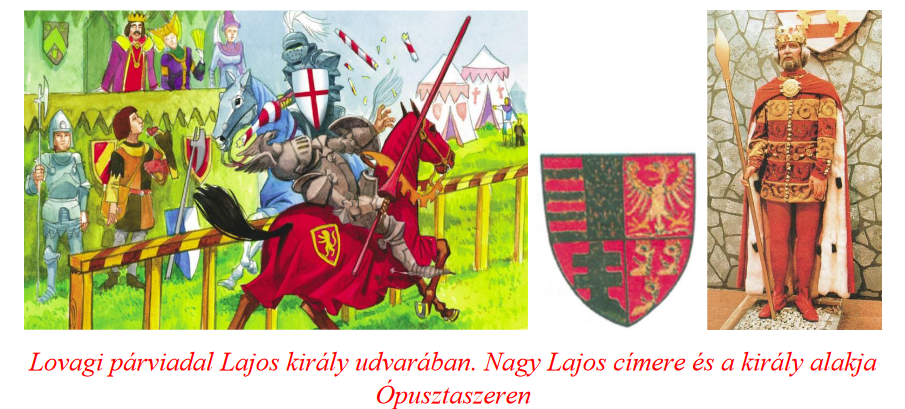
The history-shaping personality of Lajos Nagy
Louis the Great fulfilled his knightly duty when he launched two campaigns against Naples due to the murder of his younger brother, András Anjou. The growth of the Kingdom of Hungary took on unprecedented proportions, as Moldavia and Havasalföld became part of the country, and also when the Poles elected Lajos as their king. As a result of the personal union, Hungary has already assumed imperial proportions.
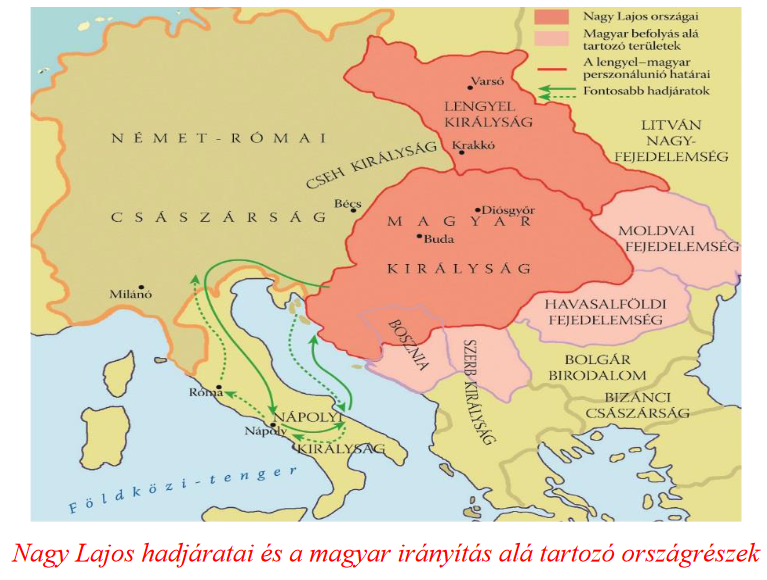 The laws of 1351 instituted by Louis defined Hungarian legislation, economic and political life, and the development of education and culture for five centuries. After all, they were only changed by the laws of 1848.
The laws of 1351 instituted by Louis defined Hungarian legislation, economic and political life, and the development of education and culture for five centuries. After all, they were only changed by the laws of 1848.
The two kings of Anjou must be ranked among the greatest Hungarian rulers! Their actions had an impact on the strength and stability of the country for centuries. Did they achieve all this by creating a strong central authority? Yes!
Sigismund of Luxembourg (1387-1437) emperor and king
In 1387, a Western power (German-Roman Emperor) came to the Hungarian throne. While Róbert Károly had to fight the Hungarian petty kings in order to restore the unity of the country, Zsigmond had a serious conflict with a group of barons from the Anjou party. On the one hand, these, and on the other hand, the losing campaigns against the Ottoman-Turkish Empire (Rigómező, Nikápoly), which was emerging at this time and started to attack Europe, posed a challenge to the ruler of the empire.
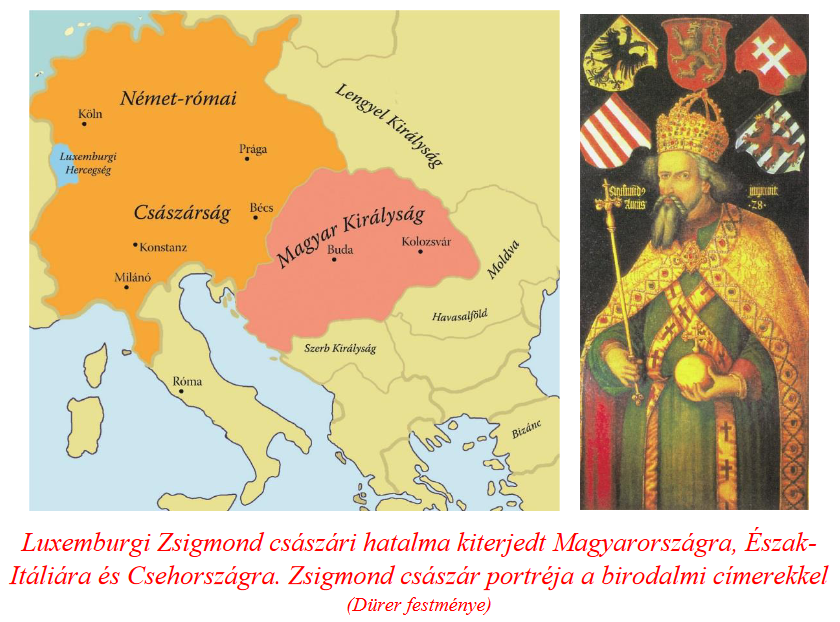 Zsigmond, also a foreigner, was not as "Hungarian" as his Anjou predecessors. This arose from the many other tasks of the vast empire that fell to him. These include the Council of Constance and the Hussite wars. However, it should be known that he did not neglect the Turkish threat when he built the southern end line. Perhaps it was during his half-century reign that Hungary was not attacked from the west alone. (This cannot be said about the half-millennium period of the Habsburgs, when our country was also part of the empire, just like in the Sigismund era.) The urbanization of Hungary, the boom in economic life, and the increase in education during the Anjou period are all thanks to Sigismund. His sense of Hungarianness, despite his German origin, was manifested in the fact that he also considered Saint László as his role model. It is no coincidence that according to his will, he was buried in Várad, next to the grave of St. László.
Zsigmond, also a foreigner, was not as "Hungarian" as his Anjou predecessors. This arose from the many other tasks of the vast empire that fell to him. These include the Council of Constance and the Hussite wars. However, it should be known that he did not neglect the Turkish threat when he built the southern end line. Perhaps it was during his half-century reign that Hungary was not attacked from the west alone. (This cannot be said about the half-millennium period of the Habsburgs, when our country was also part of the empire, just like in the Sigismund era.) The urbanization of Hungary, the boom in economic life, and the increase in education during the Anjou period are all thanks to Sigismund. His sense of Hungarianness, despite his German origin, was manifested in the fact that he also considered Saint László as his role model. It is no coincidence that according to his will, he was buried in Várad, next to the grave of St. László.
Zsigmond can also be classified as one of our famous rulers. But as the ruler of the German-Roman Empire, he cannot be considered a ruler whose primary task was only the control of the Kingdom of Hungary. He was not a national king, but if he could trust anyone, they were Hungarian supporters.
The age of the Hunyadis (1442-1490). The 15th century was a period of hope
János Hunyadi did not begin with his election as governor, but with his actions as a general. He achieved his first great victory over the Turks in 1442, near Marosszentimre, and from then on he bore the honorary title of "beater of the Turks". However, the rise is not only related to the political and military battles fought with external, but also internal opponents.
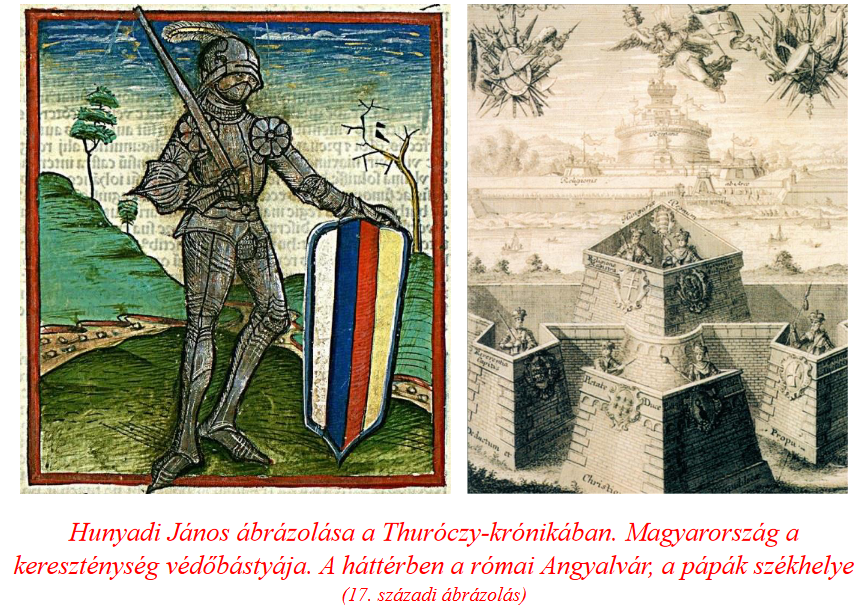
Like most of his predecessors, János Hunyadi had to deal with internal opposition, led by the Cillei family from the Duchy of Styria. With their influence, they were able to persuade the weak-handed King László V to execute László Hunyadi
János Hunyadi, the excellent general and the Hungarian governor who defeated the Turks, was celebrated by all of Europe when he stopped the Ottomans at Nándorfehérvár. In the 15th century, Christian Europe, with the Pope at its head, still considered the fight against Muslims to be its main task. Because they knew that this posed a fatal threat to Christian Europe.
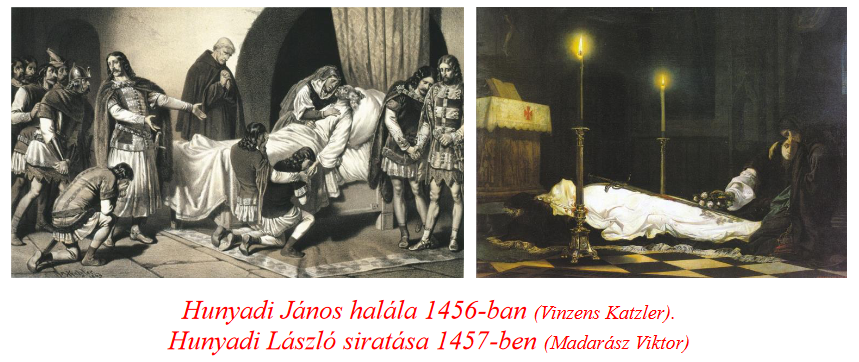
The Hungary of the 15th century faced two great powers. In the following centuries, the resistance weakened and became almost fatal. The conquering, increasingly powerful Ottoman Empire sought to acquire the Carpathian basin from the south, and the German Empire from the west. In the 15th century, the two Hunyadis were still able to repulse the attacks, but at the beginning of the 16th century, the resistance was broken.
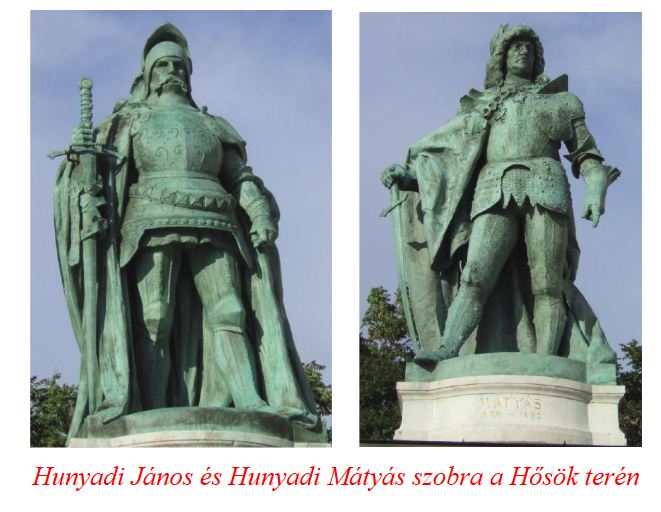
Reign of King Matthias (1458-1490)
A part of the commoners and nobles put the fifteen-year-old Mátyás Hunyadi , who was one of the most talented, large-scale rulers in Hungarian history.

The politics and historical role of King Matthias have already been tried many times by many. You can formulate facts that seem plausible, but no one can take away from Mátyás Hunyadi that he was the last national king who was able to keep his country together and defend it. And there were plenty of enemies, thanks to both external attacks and the minework of the internal opposition. He was strict, taxed the people, and spent a lot of money on campaigns. This is true! But what is better? This, or his immediate successor on the throne, Ulászló Jagelló (László Dobzse) , who, according to the news, was in debt even to the butchers of Buda, because the treasury was so empty.

Mátyás spent a significant part of his life in military camps, because the wars against the Czechs, Austrians and Turks limited his abilities as a general. Here we note that the accusation that he pushed the defense against the Turks into the background does not hold up. On the one hand, this would have contradicted his father's anti-Turkish policy and the legacy left to him. On the other hand, the acquisition of the Czech and Austrian thrones was considered important by Mátyás because he knew that the west would only help against the Ottoman invaders if he controlled it himself. True, it was only half-successful, but the proud castle of Vienna groaned at Mátyás's army. (Let us note that the thousand-year-old Hungarian-Polish fraternal relationship was at its lowest point at the time of Matthias. Matthias's brilliant generalship is indicated by several Silesian campaigns. Such was the case, among other things, when in October 1474 the Polish and Czech king won a brilliant victory with a trained army of 8,000 people against 65,000 over an army of large, well-stocked /zebras/. István Szapolyai and Pál Kinizsi at the head of their light cavalry troop galloped across the territory of Poland, winning victories and instilling fear in the enemy.)
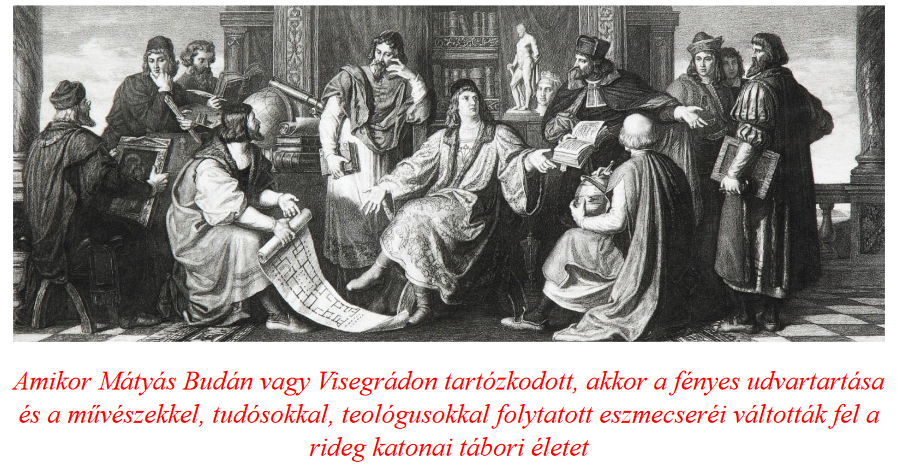
Our great king was looked down upon in Western courts, despite his military successes, brilliant political skills, unparalleled library, Renaissance courtship, and European-standard wealth of the Kingdom of Hungary. As before and since then in all cases the Hungarians. Thus, he only found a wife in Naples in 1474, Beatrix of Aragon . However, Mátyás could have learned Endre of Anjou . The Neapolitan poisoners did not spare Mátyás either. There is a strong suspicion that in 1490, on Easter day, the poison that took the life of our great king in Vienna, which his wife, Beatrix, mixed for him.
János Hunyadi and Mátyás Hunyadi are two undisputed great figures of Hungarian history. We could not get to know László Hunyadi's talent because he was killed before his time. The biggest enemy of the Hunyadis was Habsburg III. Frederick (1440-1493) was a German-Roman emperor who survived both Hunyadis. It should be noted that the Habsburg emperors were "protected". In terms of their average lifespan, they lived many more years than the Hungarian rulers. King Ulászló Jagielló (1490-1516), who brought the kingdom of the Árpáds to ruin, finally succeeded in acquiring the Hungarian throne.
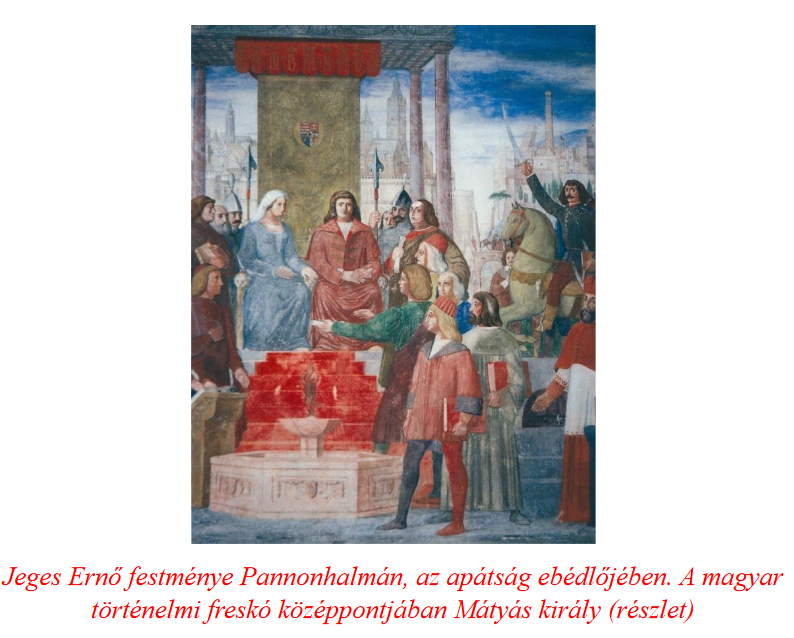
Author: Ferenc Bánhegyi
Cover image:
The parts of the series published so far can be read here: 1., 2., 3., 4., 5., 6., 7., 8., 9., 10., 11., 12., 13., 14., 15., 16., 17., 18., 19., 20., 21., 22., 23., 24,, 25., 26., 27., 28., 29/1.,29/2., 30., 31., 32., 33., 34., 35., 36., 37., 38., 39., 40., 41., 42., 43., 44., 45., 46., 47., 48., 49., 50., 51., 52., 53., 54., 55., 56., 57., 58., 59., 60., 61. 62., 63.


